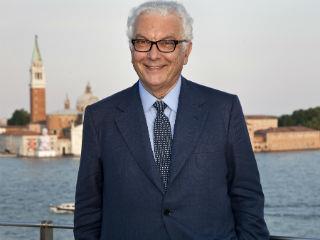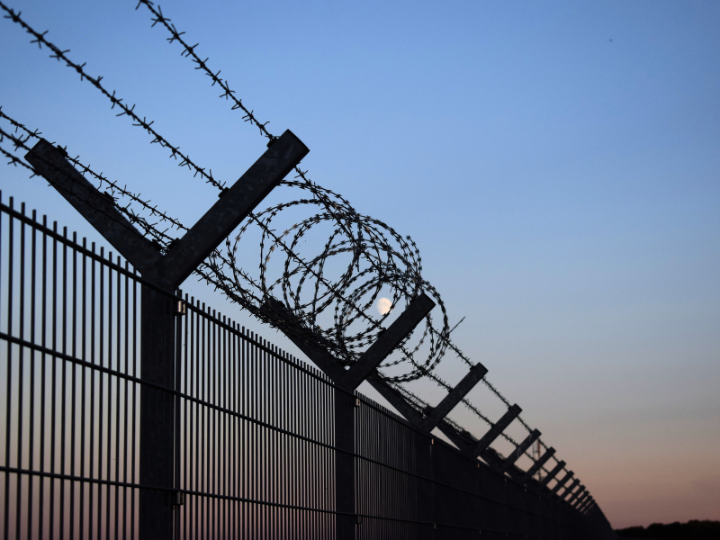by Alexandra Papaisidorou*
The title of this Exhibition could be interpreted as a sort of curse, where the expression "interesting times" evokes the idea of challenging or even "menacing” times, but it could also simply be an invitation to always see and consider the course of human events in their complexity, an invitation, thus, that appears to be particularly important in times when, too often, oversimplification seems to prevail, generated by conformism or fear. And I believe that an exhibition of art is worth our attention, first and foremost, if it intends to present us with art and artists as a decisive challenge to all oversimplifying attitudes.
Twenty years have passed since, in this same location, I presented my first Exhibition (as President), after the Biennale underwent major reform in 1998. Let me tell you, they have been very interesting times. It’s natural that, over the course of these years, we – and many other people - have often reflected on the role the Biennale should have and the challenges it must face, well aware of the many, ambivalent ways our work (and our mission) can be interpreted. Our work stands apart from that of many others, not for what it does (Exhibitions) but perhaps for the spirit with which it is done and for our work method, which, in turn, must hold true to that spirit.
In times of great change, we have all realised that we must pay attention to the evolution of the world and of the world of art. I must admit that, at the helm of La Biennale di Venezia, we are facilitated in this task since we are active in various artistic sectors – Theatre, Music, Dance, Film, and Architecture – and the stimuli, challenges, and incentives never lack. How have we reacted? To keep it short: we try to be sensitive to the spirit of the times but also firm on a number of points. First of all, we are an international exhibition, a complex international exhibition, in which numerous exhibitions promoted by participating countries dialogue with each other, and, together, dialogue with the international exhibition we organize in collaboration with our Curator. In turn, our exhibition must be open and without any boundaries. To this end, I remember how the word ‘open’, more than any other, resounded in us in the early years and it characterised our choices in 1999 and 2001: to be ‘open’ to new spaces; to ‘open’ our exhibition, in order to represent art as a phenomenon of humanity (the title of our first Biennale was APERTO overALL, the second was entitled Plateau of Humankind; these two titles became the motto for all the following editions of the exhibition).
Then as now, we consider this method, which was founded on our independence and that of the Curator, the most effective one for making our exhibition an instrument of knowledge, imperfect yet dynamic, able to navigate the complexity, aware of the ambivalence which lies within every phenomenon but without repudiating it through ambiguous remedies.
To navigate the complexity means to not reduce something to schema and formulas - something which, by its very nature, is manifold and cannot be traced back to a unicum, unless at a high cost.
Twenty years ago, this choice of ‘openness’ was our response to the many critics who accused the Biennale and its ‘national pavilions’ of being old-fashioned; in those years, cosmopolitanism and globalisation were in vogue. Now, twenty years later, some people raise the doubt that cosmopolitanism might also have been a way for dominant societies and economies to exert a sort of soft power. But once again, I believe that the attention given to minority artists as a consequence of these preoccupations must develop in the direction of further openness, rather than along the ambiguous pathways of the celebration of local identities. And, in any case, it must not merely repropose a new trend.
In our activity, we must give meaning to historical evolution without necessarily following the parabolic-physiological model that everything is born, grows, and decays. We must foster the permanent revolution which is brought to us by the works and the artists, all the while avoiding models which turn the artist into a one-dimensional subject, a direct agent of history and political evolution. We must not fall into the trap of letting ourselves be guided by the market, but instead must make free choices and, by all means, avoid humoring the diktats of prevailing trends. If necessary, we must go against the mainstream of the moment, fully aware that the market exists and the information which a Biennale offers also ends up contributing to its improvement.
What we do has many by-products and many side effects, which are in part contradictory, and this exposes us to the criticism of those who nearsightedly see the side effects and confuse them with the main objectives. We, too, must pay great attention to our primary mission and hope that the commentators will be sufficiently willing to discern the difference. Regarding this, we have discussed our relationship with the market, but again, a partial vision of the Exhibition might consider it a high-society inauguration followed by a line six months long for ‘the rest of the world.’ Others might consider the six-month-long Exhibition the main event and the inauguration a by-product. It would be so useful if journalists would come at another moment and not during the ‘three-day event’ of the ‘society’ inauguration, which can only give them a very partial image of the Biennale! Moreover, the visitors of the Biennale, who are actually a community in themselves, are statistically tourists (a tautology in a small city) and thus... we are suspected of compliance with selling strategies.
In answer to much of this short-lived criticism, let me recount a short story we were told in our childhood: the story of the old father, the young son, and the donkey going to town. The old man rides the donkey and the people passing by say: "look at that selfish man, he lets the child walk on this horrible path, look at his poor little feet". The father reacts, they switch places, and a new group of passers-by say "look at that selfish boy, full of energy but he leaves to his poor old father the fatigue of walking". They feel a bit humiliated and decide to both ride the donkey together and the comment is "barbarians, that’s a true exploitation of animals!". Finally, they decide to both dismount, just in time to hear "look at those two idiots, they have a donkey and they’re walking!"
In short, our mission is simple, albeit not easy: throughout the entire six months of the exhibition, to offer artists a place where they can dialogue as freely as possible and offer visitors an intense encounter with art.
During these years, we have increased the number of visitors and found a new partner. Over the course of the past years, the double cost of transportation in the lagoon obliged us to ask for additional support, and our expressions of gratitude and our press books included many market participants. The increase in the number of our visitors has allowed us to considerably cut
back on this practice, as you can see in the drastic reduction in our expressions of gratitude, both when presenting the works and in the catalogues, with the exception of a few ‘special’ presences (characterised by the high cost of their realisation and/or transportation). Our visitors have become our main partner; more than half are under 26 years of age. Calling notice to this result seems to me the best way to celebrate the twenty years which have passed since 1999.
We want to offer them an open gym, where they can feel involved in encounters with the works and the artists, in the direct discovery of the ‘other’ which the work of art offers. To us, it is important that, when entering the exhibit, the ‘public’ becomes ‘visitors’, who then become ‘observers’ of the work. First, the necessary disorientation, then the involvement, followed by the discovery; it is almost a fencing drill. To share this direction is one of the reasons we have asked Ralph Rugoff to collaborate with us on this twentieth anniversary.
More than ever, the process of expanding our eyes and our minds is facilitated if it takes place in an environment in which people can breathe independence and trust, and creating trust is our long-term objective.
*Editor-at-large & PhD cand. of European & International Relations on Cultural Diplomacy




 By: N. Peter Kramer
By: N. Peter Kramer
